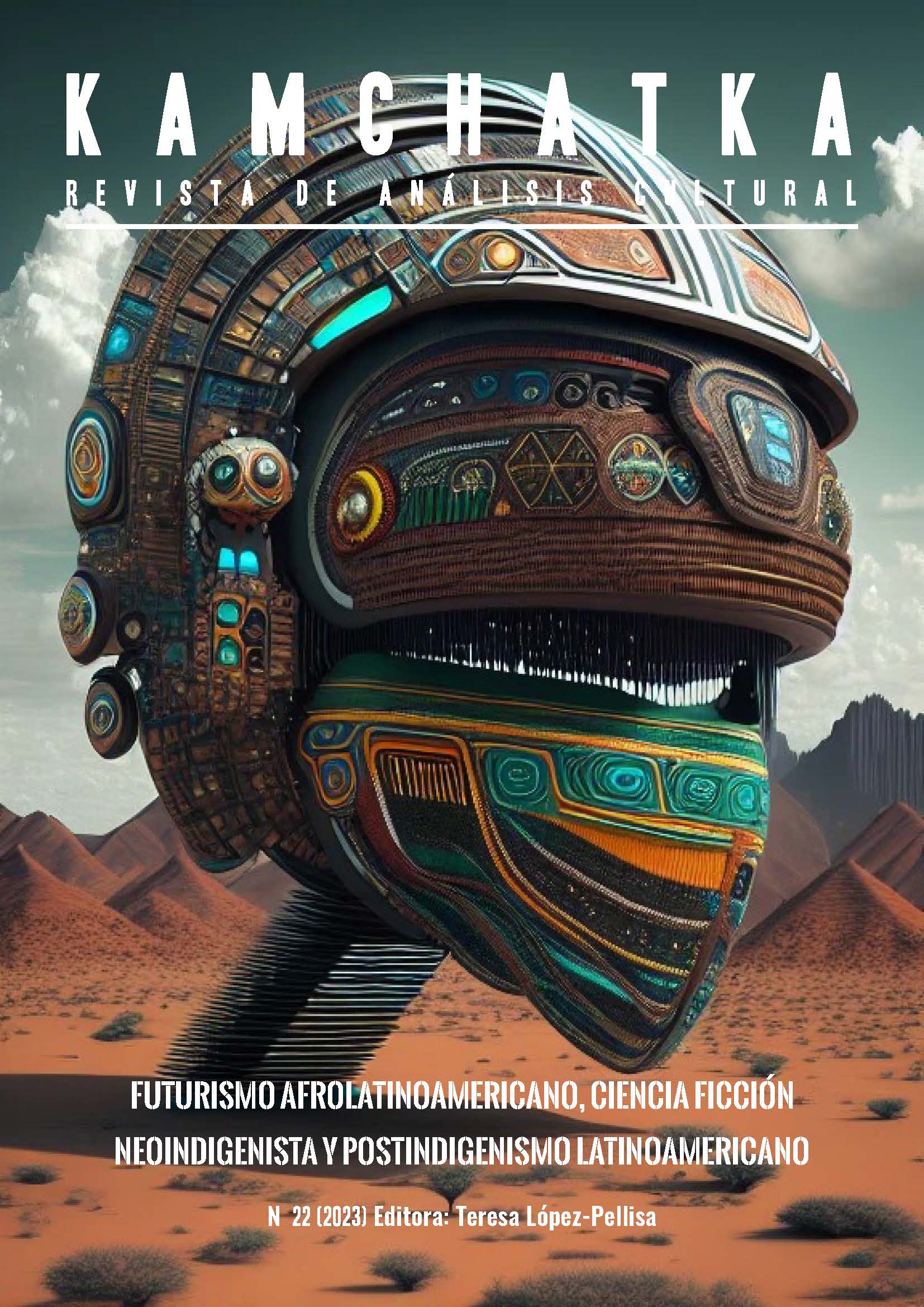The Emergence of Travesti Identities in Argentina
DOI:
https://doi.org/10.7203/KAM.22.26086Keywords:
Travestis, Transgender History, History of Sexuality, Argentina Abstract
Abstract
This research reconstructs the conditions of emergence of travestis’ lifestyles between the 1950s and 1980s. The main hypothesis will be that both gays and travestis are contemporary productions that emerged in the marica cultures of the past through a process of mutual differentiation. This process required, as a condition of possibility, the separation of sexual identity and gender identity —previously inseparably intertwined— as two independent and autonomous dimensions. The work will examine the transformations in the sexuality and usage of gender of maricas, gays, and travestis. It will analyze how the incorporation of knowledge and practices related to the manipulation of the body and the imposition of femininity in carnivals and cabarets opened a space of possibility for the emergence of the contemporary travesti experience. I will argue that the emergence of travestis is parallel to the emergence of gay identities from a simultaneous process of transphobic differentiation that requires the denial and repudiation of travestis by the latter. The research is based on the historiographical analysis of a diverse corpus of cultural, newspaper, and testimonial materials.
 Downloads
Downloads
 References
References
Anabitarte, Héctor. (1982). Estrechamente vigilados por la locura. Barcelona: Hacer.
Argañaraz, N. N. (1991). Gloria o el drama de la existencia: recuerdos del travesti más viejo de América del Sur. Montevideo: Ediciones O Dos.
Aultman, B. (2014). Cisgender. TSQ. 1 (1-2), 61–62.
Bachillerato Trans Mocha Celis. (2017). La revolución de las mariposas. Buenos Aires: Ministerio Público de la Defensa.
Ben, Pablo. (2018). Global Modernity and Sexual Science: The Case of Male Homosexuality and Female Prostitution. En Veronika Fuecthner, Douglas Haynes, and Ryan Jones, A Global History of Sexual Science. Oakland: University of California Press.
Berkins, Lohana. (2003). Un itinerario político del travestismo. En Maffía, Diana (comp.) Sexualidades Migrantes. Género y Transgénero. Buenos Aires: Feminaria.
Berkins, Lohana. (2013). La gesta del nombre propio. Buenos Aires: Madres de Plaza de Mayo
Berkins, Lohana. (2015). Cumbia, copeteo y lágrimas. Buenos Aires: Madres de Plaza de Mayo
Carrier, Joseph, (2001). De los otros. Madrid: Talasa.
Chauncey, George. (2003). Gay New York. New York: BasicBooks.
Cutuli, Soledad. (2013). Maricas y travestis: repensando experiencias compartidas. Sociedad y Economía. (24): 183-204.
Felitti, Karina. (2012). La revolución de la píldora. Caracas: Edhasa.
Fernández, Josefina. (2004). Cuerpos desobedientes: Travestismo e identidad de género. Barcelona: Edhasa.
Fernandez, Maximo. (2018) Nadie puede juzgar qué es bueno y qué es malo. Sexualidad, Salud y Sociedad, 29.
Figari, Carlos. (2012). La invencion de la sexualidad: El homosexual en la medicina Argentina (1870-1930). En D. Jones, C. Figari, S. Barrón López, & L. Ariza (Eds.), La producción de la sexualidad: políticas y regulaciones sexuales en Argentina. Buenos Aires: Biblos.
Foucault, Michel. (1993). Historia de la sexualidad. México: Siglo XXI.
Fry, Peter. (1982). Para inglês ver. Rio de Janeiro: Zahar.
Guasch, Oscar. (2013). La construcción cultural de la homosexualidad masculina en España (1970-1995) En Mérida J., Rafael (ed.). (2013). Minorías sexuales en España (1970 –1995). Barcelona: Icaria
Guimarães, Carmen. (2004). O homossexual visto por entendidos. Rio de Janeiro: Garamond.
Haraway, Donna. (1995). Ciencia, cyborgs y mujeres. La invención de la naturaleza, Madrid: Cátedra.
Jones, Ryan. (2017). “Mexican Sexology and Male Homosexuality: Genealogies and Global Contexts”, in Veronika Fuechtner, Douglas Haynes, and Ryan Jones A Global History of Sexual Science, 232–257.
Kulick, Don. (1999). Travesti. Chicago: University of Chicago Press.
Laguarda, Rodrigo. 2012. Ser gay en Ciudad de Mexico. Ciudad de México: Mora.
Lanzagorta García J. I. (2018). La zona rosa un estudio socioespacial sobre género sexualidad sociabilidad e imaginario urbano en la ciudad de México. Ciudad de México: Universidad Nacional Autónoma de México. (Ph. D. dissertation).
Maffia, Diana. (2014). Normalidad y alteración sexual en los 50´s: El primer Departamento Sexológico de la Argentina. En D. Barrancos, D. J. Guy, & A. Valobra (Eds.), Moralidades y comportamientos sexuales. Buenos Aires: Biblos.
Malva. (2011). Mi recordatorio. Buenos Aires: Libros del Rojas.
Manzano, Valeria. (2019). Tiempos de destape: sexo, cultura y política en la Argentina de los ochenta, Mora.
Meccia, Ernesto. (2011). Los últimos homosexuales. Buenos Aires: Gran Aldea.
Meccia, Ernesto. (2016). El tiempo no para. Buenos Aires: Eudeba.
Milanesio, Natalia. (2019). DESTAPE: Sex, democracy, and freedom in postdictatorial argentina. Pittsburgh: Pittsburgh Press
Murray, Stephen. (1995). Latin American male homosexualities. Albuquerque: University of New Mexico Press.
Núñez Noriega, Guillermo. (2000). Sexo entre Varones. México: UNAM
Peralta JL Mérida Jiménez RM. (2020) Palabras Para Una Tribu : Estudios Sobre Argot Gay En Argentina España Y México. Madrid: Egales Editorial.
Perlongher, Néstor. (1984). El sexo de las locas, El Porteño, Mayo.
Perlongher, Néstor. (1999). El negocio del deseo. Buenos Aires: Paidós.
Prieur, Annick. (2008). La casa de la Mema. México: UNAM.
Rapisardi, Flavio y Alejandro Modarelli. (2001). Fiestas, baños y exilios. Buenos Aires: Sudamericana.
Román, P. E. (2022). Un papel manchado con rouge. “Amorales suburbanos” en el discurso periodístico durante el primer peronismo. La Plata, 1948. Sociohistórica, 49, e163. https://doi.org/10.24215/18521606e163
Salessi, Jorge. (1995). Médicos maleantes y maricas. Rosario: Beatriz Viterbo.
Show, Vanessa. (2012). Es verdad. Buenos Aires: El Escriba.
Sívori, Horacio. (2005). Locas, chongos y gays. Buenos Aires: Antropofagia.
Wayar, Marlene. (2018). Travesti: Una teoría lo suficientemente buena. Buenos Aires: Muchas Nueces.
Downloads
Published
How to Cite
-
Abstract789
-
Artículo PDF (Español)369
Issue
Section
License
This journal provides an immediate free access to the content on the principle that freely make investigation available to the public, which promotes an increased global knowledge exchange.
Unless otherwise indicated, texts published in this journal are under the license Attribution-NonComercial 4.0 by Creative Commons. These texts may be copied, distributed and publicly communicated whenever the publication’s author and title are quoted and whenever they are not used for commercial purposes. In any case, intellectual property of the articles and its potential economic rights entirely belong to its authors.
The full license can be consulted on https://creativecommons.org/licenses/by-nc/4.0/. We encourage authors to disseminate papers published in Kamchatka. Journal of cultural analysis electronically, in institutional digital repository or in their websites.





